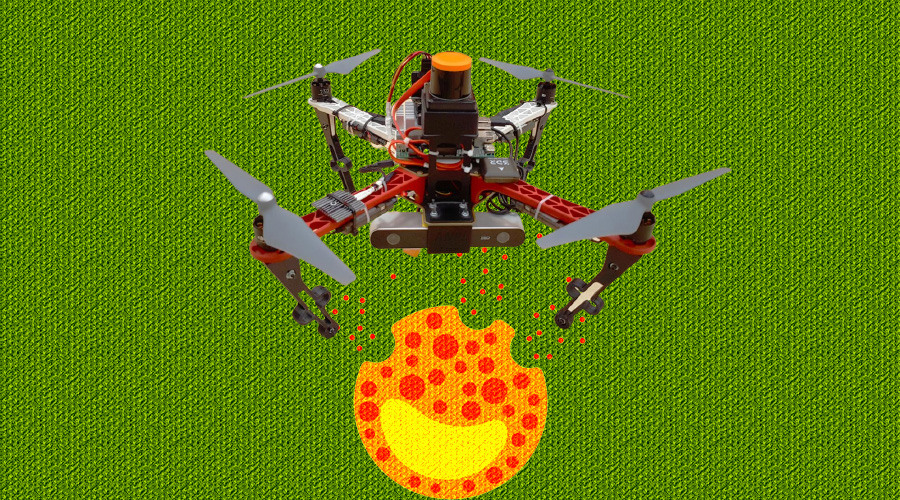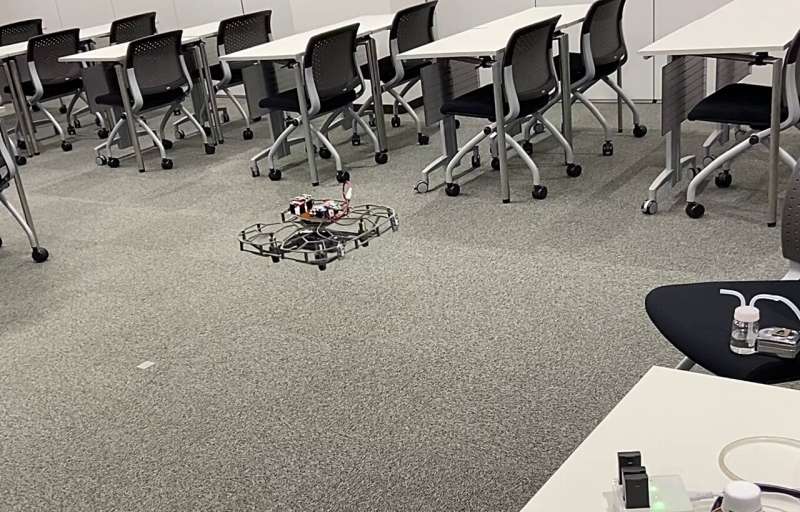A Palm-Sized Robotic Drone Can Smell and Track Hazardous Gases
Developing robots that can detect odors presents a challenge. Living organisms have unique and individual mechanisms to detect smells, and some species have a high level of sensitivity to odors. But when it pertains to robots, it will require a combination of evolutionary engineering and human engineering that would work in all possible directions. It would require the integration of state-of-the-art deep learning algorithms, movement planners, reliable robotic platforms, and high-performance odor sensors.
Possibility turns to reality
Researchers have previously thought of the possibility of building odor-tracking robots. Now that has become a reality as researchers at Osaka University, Tokyo Institute of Technology, and SoftBank Corporation worked together to develop a small drone that could track chemical plumes during search and rescue operations and environmental protection. The research paper on the drone is available in the journal IEEE Transactions on Instrumentation and Measurement.
The researchers based the palm-sized drone’s operation on particle image velocimetry, an airflow visualization technology.
One of the researchers, Shunsuke Shigaki, explained that research on 3D odor source localization employing a drone is still in development. In their earlier experiments, they only mounted one or two odor sensors, but crosswinds affected the drone’s flight and moved at varying heights.
They realized that their previous method was inefficient. Moreover, the drone’s flight time was short; thus, they needed to amend the 3D odor-tracking performance of the system.
Developing the system

Particle image velocimetry, from where the engineers base their small drone, is an optical technique that measures the overall velocity field of a region in the airflow at that particular time. They used the technique to locate the direction where the chemical odor arrives.
They likewise integrated odor sensors on the frontal and upper surfaces of the drone to observe the chemicals in the air in three dimensions. The engineers developed the 3D surge-casting algorithms for the project by drawing on the biological mechanisms flying moths use to track plumes from chemicals.
The engineers recognize that odor diffusion is a complex matter. Thus, they created an algorithm with the power to determine the exact source or multiple sources of the odor effectively.
Shigaki further added that their airflow visualization technology is excellent. They used it to focus on the changes in airflow created by the drone. They observed that their drone intakes odor differently due to the height of the source of the odor. Thus, they designed an odor sensor placement and an algorithm that enabled them to track the odor continuously, disregarding the direction of the odor’s source.
Laboratories typically use the airflow visualization technique to test airflow in chemical fume hoods and biosafety cabinets.
In their evaluation of the various tests they conducted through a series of localization and airflow visualization experiments, the algorithm they wrote for chemical plume tracking performed remarkably well. It effectively tracked odors even when the wind direction continuously changed.
Future applications
While they are doing several things to fine-tune the odor-tracking drone, the engineers see various applications of the drone. For example, first responders can use the odor-tracking drone to identify hazardous chemicals in natural disasters, explosions, and accidents at power plants.
They are moving to the next phase of their project—to improve the drone’s design and develop a robotic system for hazardous plume tracking that authorities can perform consistently in unmapped, cluttered, and uncertain environments.
